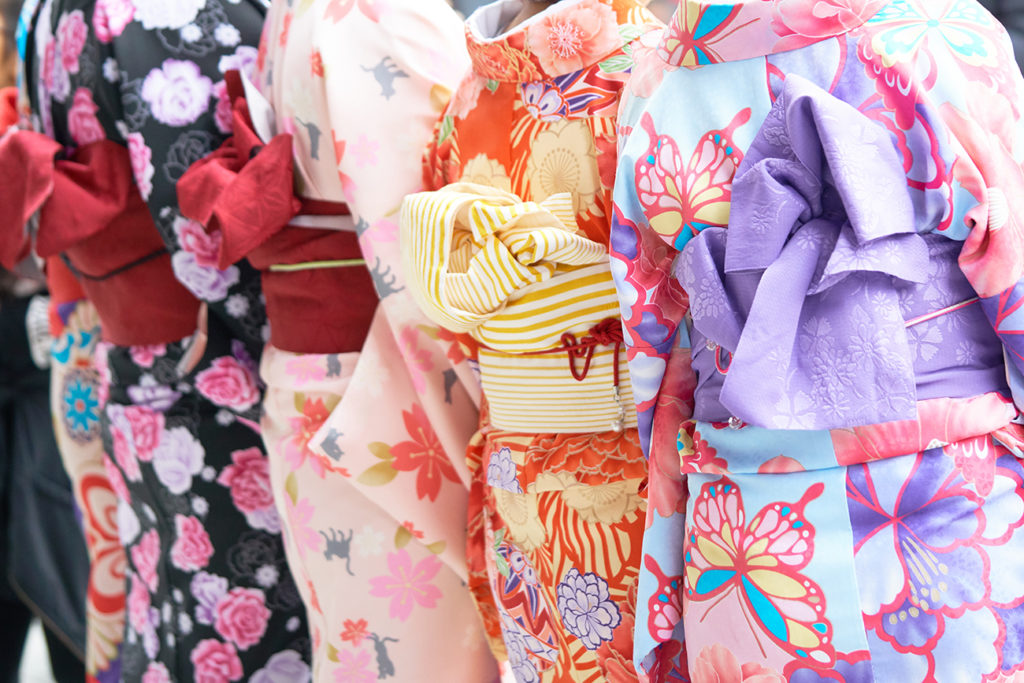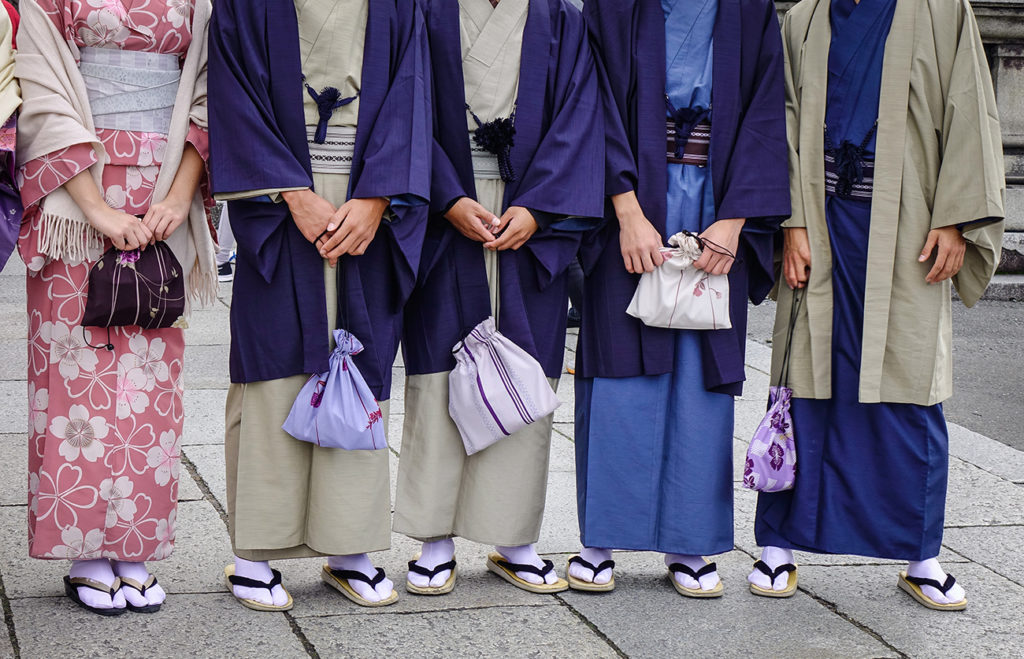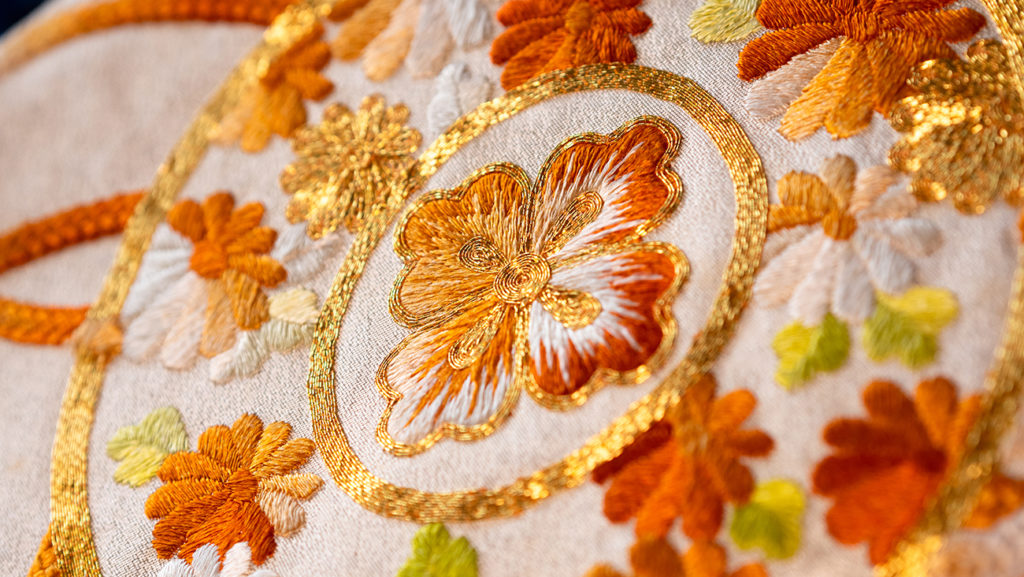
Interesting Facts About the Kimono
The kimono, literally meaning ‘thing to wear’ is a traditional Japanese garment and national dress of Japan. It is usually a full length T-shaped robe with straight lines. It’s worn so that the hem falls at the ankle and has collars and wide, long sleeves. The kimono wraps around the body, with the left side on top of the right (except when dressing for a burial), and is secured with an obi (sash) tied at the back. With a kimono, one wears traditional Japanese footwear (geta or zori) and split toe socks called tabi.
Young people in kimono.
Check out some interesting facts about the kimono:
The earliest kimono styles were significantly influenced by Han Chinese clothing, popular today as hanfu (漢服).
The sleeves of the kimono began to grow in length during the Edo Period, especially for single women, and the obi became wider. Since then the shape of the kimono has remained unchanged.
The traditional method of washing kimonos is called arai hari. Stitches were usually taken out during washing and then hand sewn again for wearing.
A kimono is made from a single bolt of cloth. It takes outstanding skills to create a kimono. A whole bolt of fabric (tan) is used to make only one kimono. The standard dimensions of tan are 12½ yards long and 14 in. wide. When completed, a kimono is made up of four main strips of fabric: two panels form the sleeves, and another two cover the body.
Kimono with embroidered pattern.
There are different kinds of kimonos depending on the wearer. There are kimonos to match the age and gender of a person. Men don kimonos with a jacket and wide-legged pants called hakama. Male kimono designs have more subdued patterns and colors. Women wear kimonos depending on the stages of the events in their lives. Single women and young women usually wear furisode, which are kimonos with long, flowing sleeves and vibrant designs. Married women wear tomosode kimonos on more formal occasions. These have shorter sleeves, a family crest and the colors are more toned down. All women whatever age may wear a houmongi when paying a social visit or attending parties.
Kimonos that are well cared for can last several generations. They are often decorated with kamon or a family crest making a kimono a perfect gift to be passed on to a child. There are kimono specialists who can restore kimonos.


